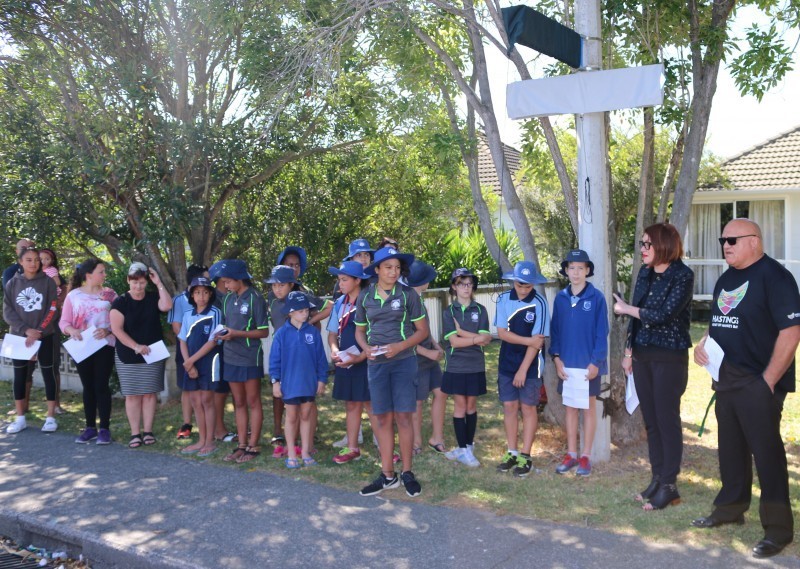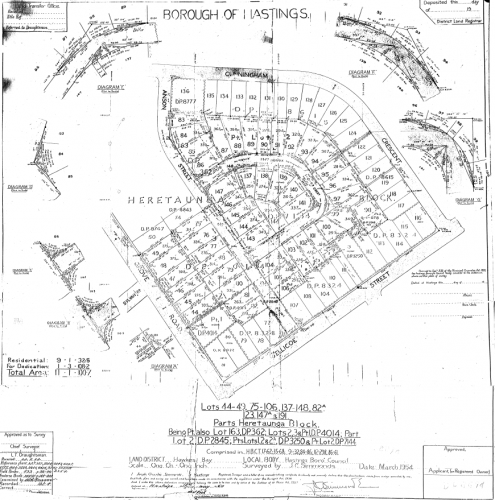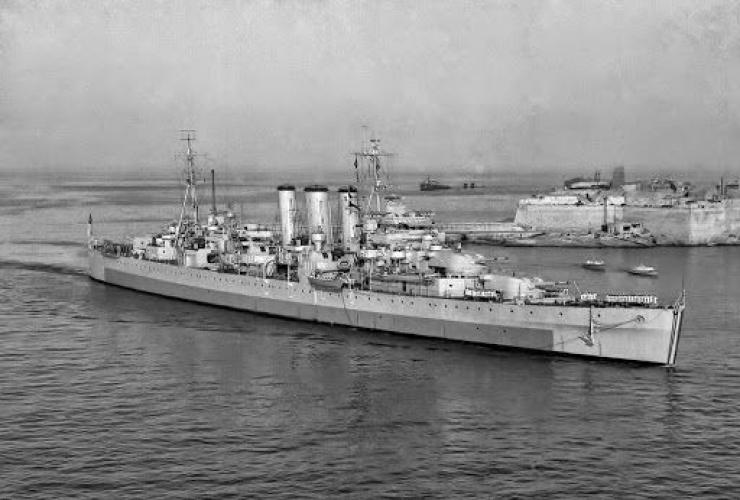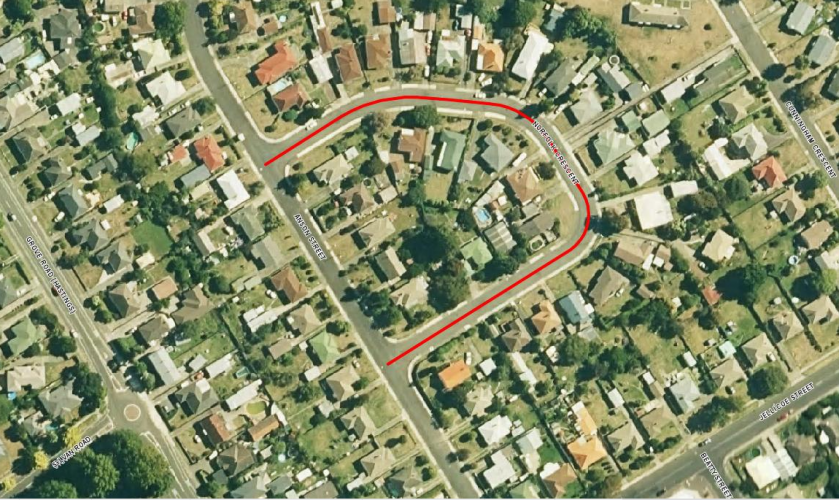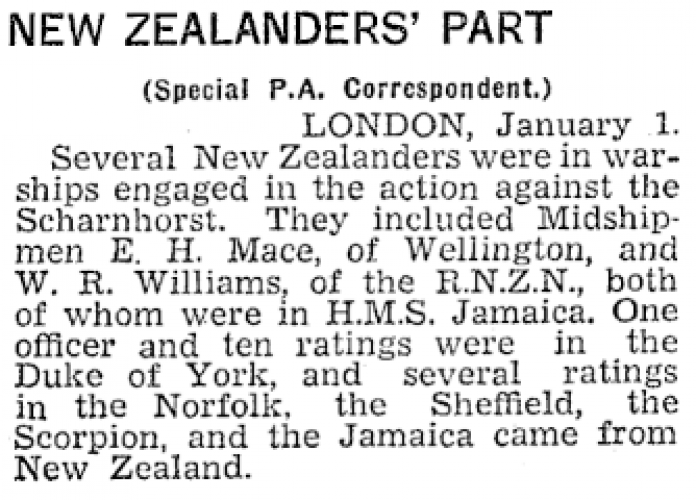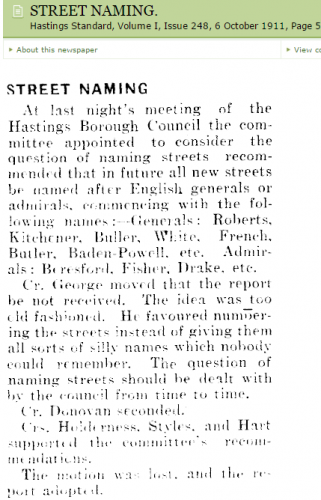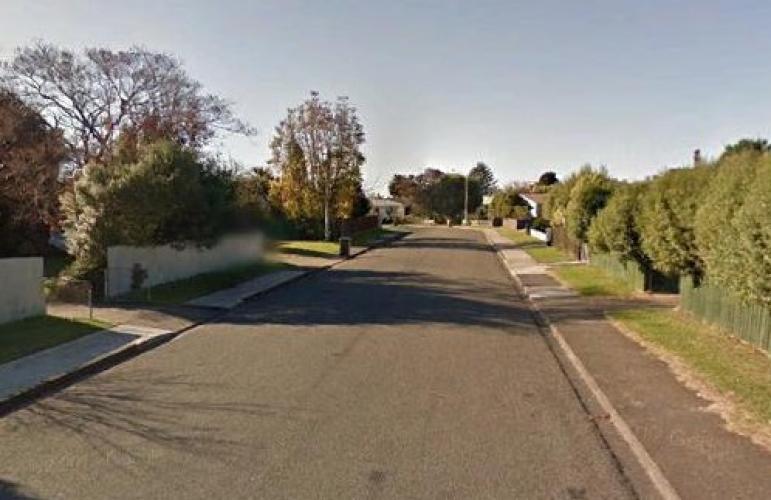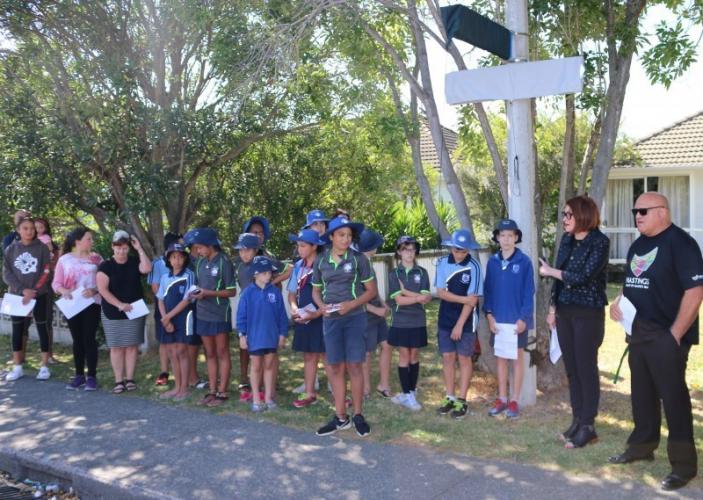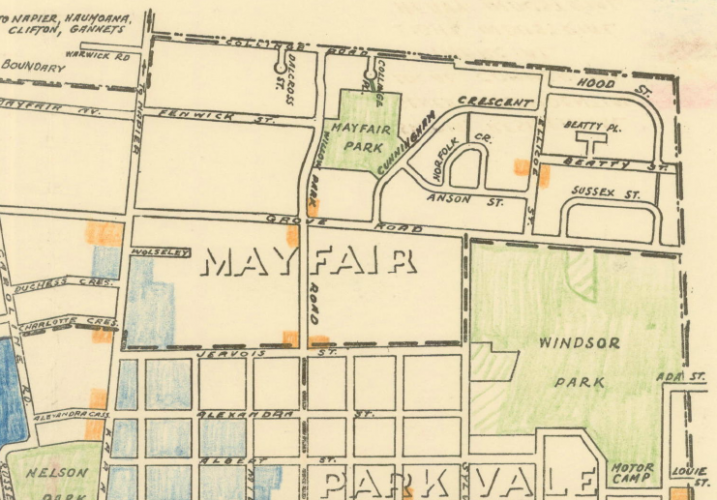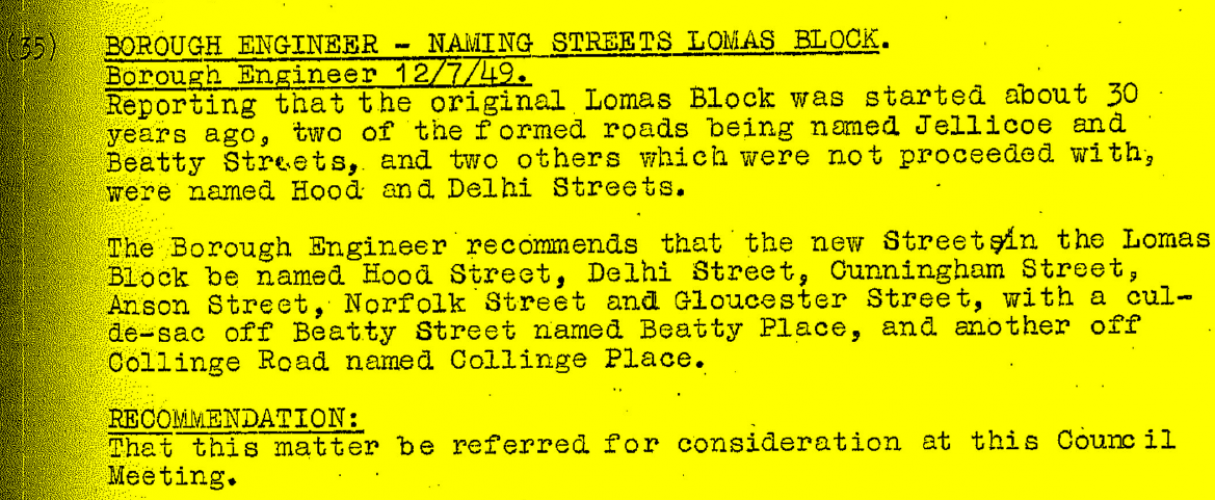062 Norfolk Cres Hastings, street view 2017
Reason for the name
This street is named in honour of the Navy. The HMS Norfolk was part of the fleet that sank the Bismarck and was one of the major combatant ships in Force H of the Royal Navy.
Norfolk Crescent is part of what was once called the Lomas subdivision in the Mayfair suburb of Hastings, near Windsor Park and local attraction Splash Planet. The streets in this area were all named for naval reasons, after Admirals or battleships (Jellicoe, Beatty, Hood, Cunningham, Sussex, Norfolk and Anson).
Council records show the naming of Hood Street (confirming a 1916 decision which also named Jellicoe and Beatty Streets), Cunningham Crescent, Anson Street, Norfolk Street and Sussex Street were decided in 1949, with the subdivision happening from 1951. Hastings Borough Council had a policy in the early 1900s of naming new streets after English generals or admirals. Following on from this, related names were sometimes chosen in the 1940’s and 1950’s after WWII.
ABOUT 7000 New Zealand officers and ratings served with the Royal Navy for varying periods during the Second World War. The peak was reached in September 1944 when the total strength of the Royal New Zealand Navy was 10,635, of whom 1242 officers and 3659 ratings, a total of 4901, were serving overseas in ships and establishments of the Royal Navy. New Zealanders saw active service in ships of every type from battleships and aircraft-carriers to submarines, motor-launches, and landing craft and in every sea from Spitzbergen in the Arctic to Cape Horn and from Iceland to the shores of Japan. They took part in every major naval engagement or operation and in countless minor actions, as well as in the ceaseless patrols and sea drudgery that make up so great a part of naval warfare.
It was thus appropriate that several new streets being developed just after WWI, and added to after WWII, were named after important naval leaders and ships.
The names for Jellicoe Street, Beatty Street and Hood Street had already been decided in 1916, although Hood Street wasn’t developed until later.
As noted, the names Cunningham, Sussex, Norfolk and Anson were added to the new streets developed after WWII. These were all naval names, for ships or admirals. Admiral Cunningham (nicknamed ABC) in charge of the naval defence forces. The surrender of the Japanese forces in Singapore was accepted aboard the HMS Sussex. HMS Norfolk was one of the battleships that sank the Bismarck. HMS Anson was to have been named HMS Jellicoe, and was one of the important battleships in the defence of the Commonwealth. It was also one of the battleships assigned to the Pacific Fleet.
Authors: Cherie Flintoff, Chris Johnson and Helen Gelletly (Hastings District Council) Madelon van Zijll de Jong and Katrina Barrett (private researchers, formerly at Hastings District Libraries).
The HMS Norfolk was part of the fleet that sank the Bismarck and was one of the major combatant ships in Force H of the Royal Navy. Norfolk was the second ship to sight the German battleship Bismarck. She and her near sister from the earlier County-class Suffolk continued to trail the German battleship; the cruisers later joined the battleships Rodney and King George V as part of the force that finally sank Bismarck.
The outward and homeward convoys in December 1943 were covered by two forces of the Home Fleet — Duke of York (flag of Admiral Sir Bruce Fraser), Jamaica, and four destroyers, and the cruisers Belfast (flag ship of Rear-Admiral Burnett), Norfolk, and Sheffield. … From then on till the end of hostilities against Germany, New Zealanders continued to take part in the frequent air strikes against shipping in the Norwegian leads, which they mined from time to time to force the convoys out into the open sea.
The Norfolk was part of the cruiser covering force of Convoy JW 55B when it engaged Scharnhorst, on 26 December 1943. She scored three hits on the German ship, and received several 11-in shell hits (all passing through the thin-skinned ship without exploding). New Zealand newspapers noted that New Zealanders were aboard the HMS Norfolk and other ships in naval battles.
The Norfolk continued to be involved in operations off Norway. Several New Zealanders were flying from aircraft carriers that the Norfolk was protecting. Lieutenant (A) Shaw,4 of 1771 Squadron, HMS Implacable, was killed on 26 October 1944 in the first of three strikes by that newly-commissioned ship. Lieutenant (A) Duff5 and Sub-Lieutenant (A) Canter,6 both of 882 Squadron, HMS Searcher, were awarded the DSC for skill and daring as fighter escorts for bombers in five operations off the coast of Norway. Lieutenant (A) Hugh Morrison,7 senior pilot of 882 Squadron, was killed on 5 May 1945 in the last offensive naval operation (code name JUDGMENT) in the war against Germany. Aircraft from the Searcher, Queen, and Trumpeter, which were supported by the cruisers Norfolk and Diadem and five destroyers, attacked the U-boat base at Kilbotn, north-west of Narvik. The enemy's depot ship Black Watch was blown up and a tanker was also destroyed. Morrison, who was shot down by flak, was awarded a posthumous mention in despatches….
Lieutenant McNaught2 was radar officer in the anti-aircraft cruiser Cairo which sailed with two convoys to Malta in 1942. She was twice in action with two Italian cruisers and four destroyers during the passage of the June convoy in which four out of six ships were sunk. The Cairo was sunk in August when nine out of fourteen ships of the convoy were lost. McNaught served for thirteen months in 1944–45 in HMS Norfolk, flagship of Rear-Admiral R. McGrigor, First Cruiser Squadron, and was awarded a mention in despatches for good service in an action in Norwegian waters in January 1945, when a convoy of eight German ships was destroyed. (Lieutenant R. S. McNaught, RNZNVR, m.i.d.; born Hastings, 23 Jul 1918; clerk.)
Other New Zealanders known to have served on the HMS Norfolk include (78) RCCNZ Member T. W. (Bill) Megennis, Wellington and David Stevenson, Tauranga.

